Stop press: Dr Claire Bartram’s edited collection Kentish Book Culture: Writers, Archives, Libraries and Sociability 1400-1660 (Oxford and Bern: Peter Lang, 2020) arrived yesterday and it looks a very fine volume. Then today the first group of taught MA students in MEMS and Modern History graduated, congratulations to all and especially Katie Brooke as the winner of the first Lawrence Lyle Memorial MA Dissertation Prize.
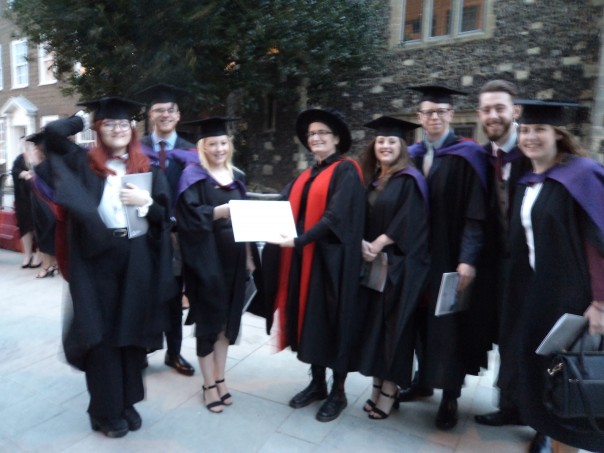
I’ll start by saying that I have been invited to a couple of meetings recently that in some ways relate to momentous changes of direction in England’s past, and whether they turned out well is still a moot point. So last Saturday I was at a play reading at St Stephen’s church as part of the preparation for marking the 450th anniversary of the founding of the Manwood Almshouses at Hackington, an institution that might not have come into existence if Henry VIII had not broken with Rome. Then next Saturday I’ll be at St Dunstan’s church to learn about events planned there to remember Sir Thomas More, a casualty of Henry’s ‘Reformation’. From a historical standpoint both scenarios are very interesting, and I hope people will come to find out about the first: Sir Roger Manwood at St Stephen’s church on Saturday 9 May; and then secondly Dr Doreen Rosman’s evening lecture on Thursday 3 September at St Dunstan’s church entitled ‘Conflicting convictions: martyrs of the 16th century’. The latter is part of the Centre’s week of evening talks on ‘Kentish Saints and Martyrs’ in conjunction with the city’s various parish churches. As soon as I have the publicity for these events, I’ll pass it on.
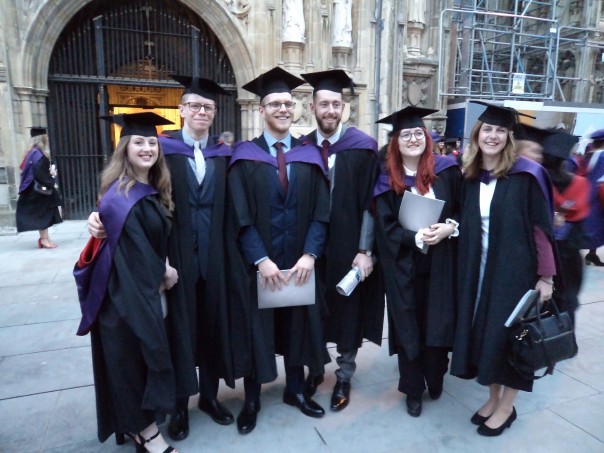
It might be said that the event described below marks even more momentous matters on the global stage for Monday 27 January not only commemorated the 75th anniversary of the liberation of Auschwitz but also 25 years since the massacre of Muslims in Bosnia, while the UN fears what is happening to Myanmar’s Muslims suggests people have yet to learn from the terrible events of the past.
Even though Holocaust Memorial Day has been marked for two decades, this year was especially poignant and staff from the Canterbury Cathedral Archives & Library, with Dean Irwin and Kerstin Müller had decided to focus on the city’s Jewish communities. I hadn’t been able to attend the first of these public events, a presentation given by the Simon Langton boys, but I was able to join the walkers who set out to discover more about the medieval Jews of Canterbury. The walk had proved to be very popular, which meant that there were far too many participants for one tour. Consequently, Dean Irwin and Kerstin Müller (KAS member and Canterbury City guide) each took a group.
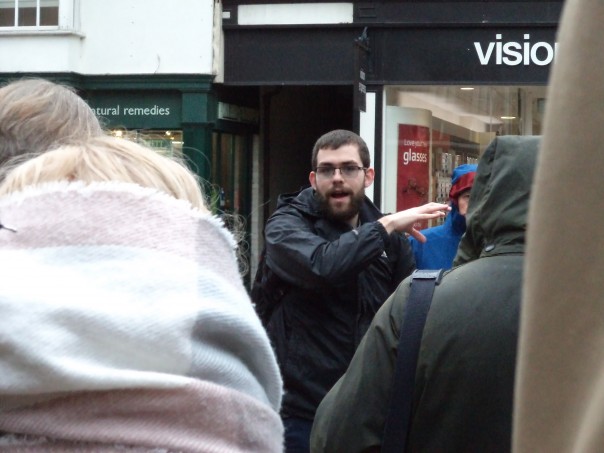
I joined Dean’s group as we headed off from the Visitor Centre in the Buttermarket (or Bulstake if we want to get into medieval Canterbury properly) towards the High Street via Guildhall Street (which wasn’t there in medieval times, having been constructed in the early 19th century on what was the site of the civic authorities’ great Lion or Red Lion Inn). Once we arrived at the High Street, Dean explained that this was within the area where many of Canterbury’s Jews had lived, the Jews having arrived perhaps by the 1160s but definitely were in the city in 1188 when they helped the monks in Christ Church Priory’s dispute with Archbishop Baldwin. Living in this central area – tenements to the east of St Mary Bredman church to Eastbridge Hospital in the west, placed them very much in the commercial heart of Canterbury.
Dean’s next stop was outside ‘Paperchase’ where he pointed out that the stone marker is wrong and this hadn’t been Jacob the Jew’s house in the 13th century, rather Jacob’s stone house had been on the other side of the High Street where The Abode Hotel is now located. Just as an aside, archaeological evidence of his house was apparently found under the entranceway of what was then The County Hotel, and these finds were later reported in the local press (Kentish Observer, 15 March 1956). Jacob was extraordinarily wealthy, his house covering three holdings including the corner plot of the High Street and what is now Stour Street but which in earlier times was known as Heathenman Lane.
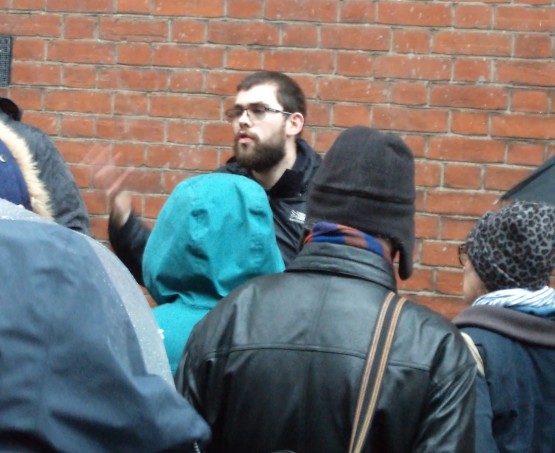
We followed Dean a little way down Stour Street before he stopped to point out that this was the location of the first Jewish synagogue in Canterbury, and the place where the Jews had prayed for the Christ Church monks as they battled with their archbishop. Moving on again we stopped at the corner where Jewry Lane meets Stour Street. At this point Dean pointed out that the tenement on the corner had been in the hands of Milka the widow of David, who like numerous Jewish women had engaged in business in their own right, including in her case taking her son to court because he had sought to take over his late father’s business. In addition, Dean used this location to highlight that even though there were a considerable number of Jews living in this area during the 13th century, equally they had had Christians neighbours, so we should not see this as a ghetto at all. For generally the history of medieval Jewish Canterbury is not one of conflict and when it did occur it was down to outsiders, in this case Gilbert de Clare and his forces in 1264. Moreover, the attack by Gilbert’s men had not led to a massacre, as happened elsewhere, the Jews having found safety in Canterbury Castle.
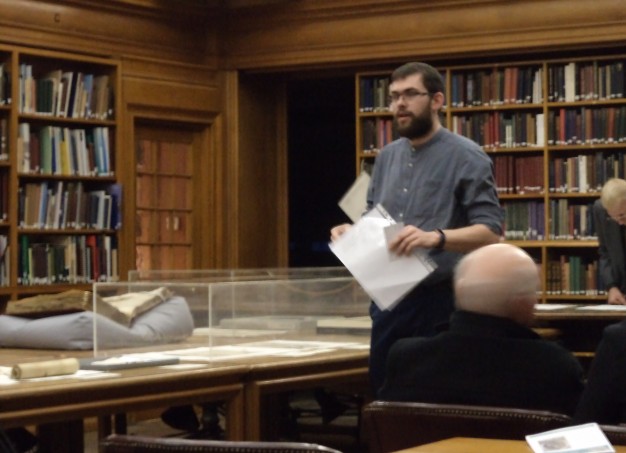
Time was pressing so Dean’s group headed off to join Kerstin’s group at Canterbury’s third synagogue in Kings Street that was used by the city’s Jews in the 19th century. This is a very interesting building being Egyptian in style with lotus leaf motifs because they had not wanted a Gothic design. Kerstin described the history of the building and then after several questions and further discussion, everyone headed off to the Cathedral Archives where there was a display of documents and books linked to the Jews, with an alternative tour of the stained glass in the cathedral.
Staying with Dean, I confined my exploration of the exhibition to the documents, Dean and Cressida having provided a fascinating display, including a St Matthew’s Gospel book with a Hebrew inscription on the flyleaf. This book had belonged to St Augustine’s Abbey and had been pawned by the abbot, the abbey having borrowed heavily from the Jews to fund their building programme among other things.
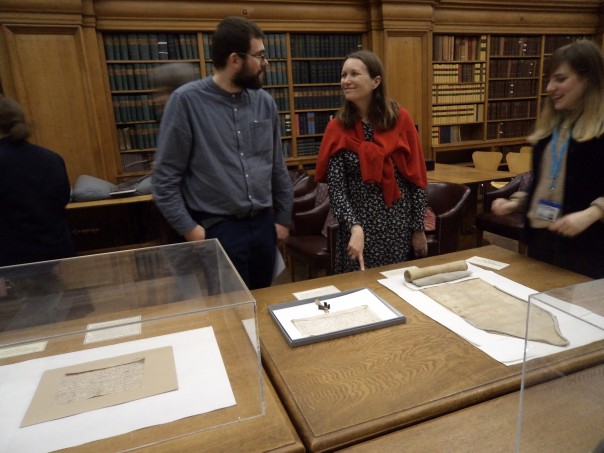
The day concluded with a special Evensong in the cathedral followed by refreshments in the Cathedral Lodge, and from the comments I overheard everyone felt that it had been an extremely worthwhile event which had been a fitting occasion to mark such a day. So well done to all the organisers.
 Centre for Kent History and Heritage
Centre for Kent History and Heritage Sheila Sweetinburgh
Sheila Sweetinburgh 1275
1275

